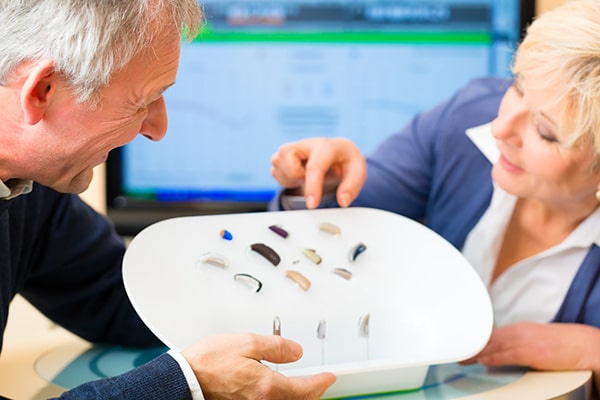
Whether you’ve just discovered that you need hearing aids for the first time or have come to realize that your current devices aren’t quite delivering the level of comfort and performance you deserve, finding the best hearing aids should be top of the agenda.
While there are many different factors to consider, Kampsen Hearing can guide you through the process. However, a little research goes a long way, and the following information should be extremely useful.
The Best Hearing Aids Are The Ones That Suit Your Needs
No two people are the same, which is why there is no single right or wrong answer regarding the best type of hearing aids on the market. Ultimately, you’ll need to weigh up the pros and cons in a number of different areas. Those aspects include the comfort, performance and appearance of the devices in question.
Nonetheless, there are four main types of hearing aids on the market, including:
Behind the ear (BTE): BTE hearing aids are the most common and traditional type of device. The amplification system is housed in a plastic casing that sits behind the ear while a speaker sites in the ear. Sounds are transmitted from the main case to the speaker via a rubber tubing. This type of hearing aid can be used for mild, moderate, severe and profound hearing loss.
In the ear (ITE): ITE hearing aids are more discrete as they sit in the ear. In addition to their appearance, a lot of people like that the customized items offer a comfortable fit. However, they can be difficult to handle due to their small size. Meanwhile, they are limited to mild and moderate hearing loss.
In the canal (ITC): ITC devices are the smallest available on the market and offer individuals the discreetness they’re seeking. These hearing aids are located in the canal and provide a natural listening experience. They can be selected in three different varieties, including completely in canal (CIC), in the canal and invisible in canal (IIC). These devices are suitable for individuals with mild to moderate hearing loss.
Receiver in the ear (RITE): RITE models are somewhat similar to BTE devices, except the receiver sits in the ear too. They are, therefore, less visible than BTEs while still providing greater power than ITEs. The miniRITE is also available for even less visibility. They can be worn by individuals with mild-to-moderately-severe hearing loss.
Getting The Right Product At The Right Price
Hearing aids are life-changing devices that will influence your safety, comfort and happiness on a daily basis. As such, they should be seen as an investment in your health rather than an additional expense. Regardless, seeking value for money is an incredibly important step to consider.
Several manufacturers produce a range of models and the choice of brand will influence the price. Meanwhile, the type of hearing aid naturally has a huge role to play too. Before rushing a purchase, you should also take additional costs such as new batteries and replacement tubing or earmolds into account. Only then can you make a calculated decision.
Perhaps the most significant element in terms of the pricing, though, revolves around the additional features.
Basic Hearing Aids Versus Advanced Hearing Aids
The technology used within modern hearing aids is nothing short of incredible and is vastly improved from the situation seen even 10 years ago. Standard hearing aids now boast many features including digital noise reduction and feedback management along with the ability to have different settings across multiple channels.
However, it’s the addition of special features that truly take hearing aid technology to the next level. Adding those capabilities will bump up the price while it also means there are more things that could go wrong with the device. Nonetheless, the right additions can completely transform your experience of wearing hearing aids.
While there are many different features to choose from depending on the style and brand of hearing aids, the most popular include:
- Bluetooth connections that can be used with various assistive listening devices (ALDs)
- Wind noise reduction that battles against the feedback caused by the elements
- Binaural technology that replicates natural hearing by ensuring that the devices work together as a pair
- AI capabilities to log data and learn from it to provide a personalized hearing experience
The decision on which features are required can be influenced by your lifestyle, the severity of hearing loss, the presence of tinnitus or other conditions, and your budget.
Getting It Wrong Isn’t An Option
Given the impact that hearing aids will have on your daily life, it’s vital that you get it right. When you analyze the pros and cons with the help of an expert, finding the perfect hearing aids for your personal needs and hearing profile should be a lot simpler than you ever thought possible.
Give Kampsen Hearing a call at (813) 369-5692. Together, we’ll find the perfect solution in no time.